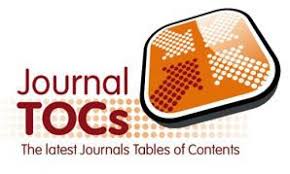Heurística recursiva de expansión mínima para el rediseño de territorios de venta
Palabras clave:
Territorios de venta multiobjetivo, heurística de expansión mínima, heurística recursiva, administración de ventas.Resumen
La globalización económica ha generado cambios profundos en las relaciones comerciales y disminuido el ciclo de vida de los productos y servicios. Esta situación incrementa los niveles de oferta y obliga a las empresas a establecer estrategias que les permitan asumir la aceleración del cambio, mediante la adquisición y retención de clientes en el largo plazo, a un costo aceptable. Un elemento importante en este proceso es la fuerza de ventas, constituida por un conjunto de vendedores que representan un enlace directo entre la empresa y sus clientes. Idealmente, cada vendedor debe estar asociado a un conjunto de clientes, ubicados dentro de un área geográfica bien delimitada. El rediseño de territorios de venta es una actividad estratégica para lograrlo. En este artículo se presenta y describe una heurística recursiva de expansión mínima para el rediseño de territorios de venta biobjetivo. El problema se inspira en una empresa real que distribuye sus productos en México. La administración de la empresa busca una configuración territorial compacta, que minimice la variación de las nuevas carteras de venta con respecto a las actuales y la distancia total recorrida por los vendedores. Para observar el comportamiento de la heurística, se resuelven dos instancias extremas obtenidas a partir de la configuración regional actual y la instancia integral que no ha podido ser resuelta mediante métodos exactos. Los resultados muestran que es posible obtener territorios contiguos, detectar mercados potenciales y fuerzas de ventas excesivas o insuficientes.
Economic globalization has been produced heavy changes into trade, thus lifecycle for products and services has been reduced. This is increasing supply levels and force to companies to establishing strategies for facing change acceleration by acquiring and retaining customers in long term. All this must have an acceptable cost. Sales force is an important element for do this. Sales force consists of a set of salespeople. They represent a direct link between company and customers. Ideally, each salesman must be associated with a set of customers. Customers may be located within a well-defined geographical area. Thus, redesigning sales territories is a strategic activity that contributing to achieve that one territory will be exclusively assigned to one salesman. This paper introduces and describes a recursive minimum spanning heuristic for bi-objective redesigning sales territories. The problem was inspired for a real company which distributes its products into Mexico. The management of the company seeks for a territorial compact configuration that minimizing the difference between current and new turnover variances, and the total distance traveled by salespeople. For analyze the behavior from the proposed heuristic, two extreme instances corresponding to current regions and the integral instance were solved. Until now, has been impossible solved the integral instance by exact methods. Results showed that contiguous territories are possible, and these can contribute to identify potential markets, and detect excessive or insufficient sales force.
Descargas
Citas
ARTAL, CM. Dirección de ventas: organización del departamento de ventas y gestión de vendedores. 9a ed. España: Madrid, 2011. chap. 6 Noción de territorio o zona, p.186-214.
CORREA JG., et al. Heurística biobjetivo de dos etapas para el rediseño de territorios de venta. Econoquantum, 2011a, vol. 8, no. 2. p.143-161.
CORREA, JG., et al. Bi-objective mixed integer programming model for the redesign of a sales region. International Journal of Industrial Engineering Special Issue-Mexico conference. 2011b, p. 376-384.
CORREA, JG.; and RUVALCABA, L. Sales territory redesign using SPEA 2. En: International Congress on Instrumentation and Applied Sciences (2°:2011:Puebla,México). Proceedings. México: Centro de Ciencias Aplicadas y Desarrollo Tecnológico-UNAM, Facultad de Ciencias
de la Electrónica-BUAP, Universidad Tecnológica de Puebla, 2011. 1v.
CORREA, J., et al. Biobjective Model for Redesign Sales Territories. Proceedings of the 15th International Conference on Industrial Engineering Theory Applications and Practice, IJIE (México, DF, 2010). p. 1-6.
GUO, J., et al. A multi-objective zoning and aggregation tool. Proceedings of the Philippine Computing Science Congress, PCSC (Computing Society of the Philippines, 2000). p. 197–201.
PALACIOS-ROJI, J., and PALACIOS-ROJI, A. Por las Carreteras de México. Guía Roji S. A. de C. V. (2010).
PRIM, RC. Shortest connection networks and some generalizations. Bell System Technical Journal. 1957, vol. 36. p. 1389–1401.
RICCA, F. A multicriteria districting heuristic for the aggregation of zones and its use in computing origin-destination matrices. INFOR, 2004, vol. 42, no. 1. p. 61-77.
RÍOS-MERCADO, R., et al. Computational experience with GRASP for a maximum dispersion territory design problem. Proceedings of the EU/Meeting (Porto, Portugal, 2009). p. 89-94.
RUVALCABA, L.; CORREA, G.; and ZANELLA, V. Multiobjective Evolutionary Algorithm for Redesigning Sales Territories. Proceeding of the International Conference Computational Logistic, ICCL, LNCS 6971, (Hamburg, Germany, 2011). p. 183–193.
SALAZAR-AGUILAR, M. A.; GONZÁLEZ-VELARDE, J. L.; and RÍOS-MERCADO, R. Z. A divide-and-conquer approach to commercial territory design. Computación y sistemas. 2012, vol. 16, no. 32. p. 309-320.
SALAZAR-AGUILAR, MA.; RÍOS-MERCADO, RZ.; and GONZÁLEZ-VELARDE, JL. GRASP strategies for a bi-objective comercial territory design problem. Journal of Heuristics, 2011. DOI 10.1007/s10732-011-9160-8.
Secretaría de Comunicaciones y Transportes. Rutas punto a punto. SCT. 2010. [ref. 25/01/2012]. [en linea] http://www.sct.gob.mx/carreteras.
TAVARES-PEREIRA, F., et al. Multiple criteria districting problems: The public transportation network pricing system of the Paris region. Annals of Operations Research. 2007, vol. 154. p. 69-92.
WEI, B.; and CHAI, W. A multiobjective hybrid metaheuristic approach for GIS based spatial zone model. Journal of Mathematical Modelling and Algorithms. 2004, vol. 3, no. 3. p. 245–261.
ZOLTNERS, A.; and SINHA, P. Sales territory alignment: A review and model, Management Science. Management Science. 1983, vol. 29, no. 11. p. 1237-1256.
ZOLTNERS, A.; SINHA, P.; and LORIMER, SE. Sales force design for strategic advantage. 1a. ed. USA: New York, 2004. chap. 1 Designing and redesigning the sales force in today’s changing world. p. 2-31.
Descargas
Publicado
Número
Sección
Licencia
Revista Ingeniería Industrial by Revista Ingeniería Industrial is licensed under a Creative Commons Reconocimiento 4.0 Internacional License. Creado a partir de la obra en revistas.ubiobio.cl/index.php/RI/. Puede hallar permisos más allá de los concedidos con esta licencia en http://revistas.ubiobio.cl/index.php/RI/about/

















